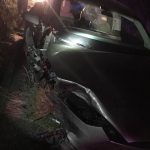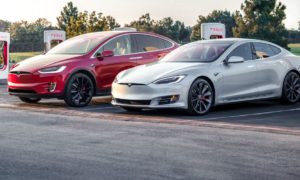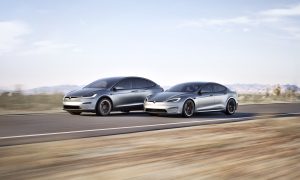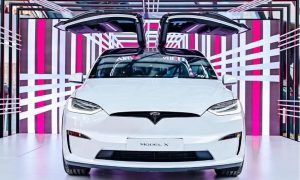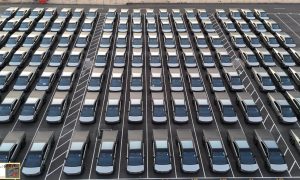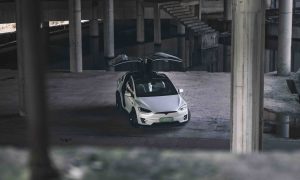News
[Updated] Tesla Model X crash in Montana blamed on Autopilot, again
The latest “My Tesla crashed for no reason while on Autopilot” saga continues after a driver claims his Tesla Model X was destroyed when it crashed on a country road in Montana while driving on Autopilot (AP). The discussion took place on the Tesla Motors Club forum with a a friend of the driver whose screen name is Eresan stating,
“Both 2 people on car survived. It was late at night, Autopilot did not detect a wood stake on the road, hit more than 20 wood stakes, tire on front passenger side and lights flyed away. The speed limit is 55, he was driving 60 on autopilot. His car is completely destroyed. The place he had accident does not have cellphone signal, it is 100 miles from the hotel. We are on a 50 people Wechat messenger group. I woke up today saw he managed to get internet to ask people in the Wechat group to call tesla for assistant.”
——————-
Updated July 12, 2016
The company said the Model X alerted the driver to put his hands on the wheel, but he didn’t do it. “As road conditions became increasingly uncertain, the vehicle again alerted the driver to put his hands on the wheel. He did not do so and shortly thereafter the vehicle collided with a post on the edge of the roadway,” the statement said.
——————-
The car traveled around a right hand curve, then went off the road. It traveled about 200 feet on the narrow shoulder, taking out 13 posts, said trooper Jade Shope. No citation was issued to the drivers because the trooper believed any citation would be void if the car was operating on Autopilot as claimed by the driver. That is a fairly curious position for a law enforcement officer to take, since there is no way for authorities to determine at the scene of an accident whether Autopilot actually was or was not activated.
So what happened? Driver error? A computer error? No doubt, Tesla will have information about the crash available soon after it downloads the data stored in the car’s computer. But there already are people on TMC questioning the authenticity of the driver’s claim that Autopilot was engaged in this Model X at the time.
Tesla Model X veers off a country road in Montana via TMC
Several TMC members have commented that using AP on a dark country road with crossroads at 2am in the morning is not a smart thing to do. There are also questions about the speed limit on that section of road. 60 mph seems too fast for conditions under any circumstances. TMC member mrElbe posted, “And I thought Tesla drivers were a bit brighter than the average one out there. But apparently not! Using AP at 2am on a sketchy road is just negligent.”
To which Eclectic responded, “Or even suicidal. I know the area where the accident is said to have happened and it’s not a place for AP use at 2 AM. There are all sorts of animals that cross roads in the area, from deer to antelope to even elk. Whatever the person was doing at 2AM, he or she made a series of bad calls. I couldn’t imagine using AP on I 90 under those conditions, let alone a county road in farm/game country.”
Eresan added a second post several hours later that read, “Just got more photos from the driver. The car was in autopilot at speed between 56-60, the car drove off the road hit the guard rail wood posts. I questioned him how can AP drove off the road himself, he said he also want to find out. Photo attached the wood posts he hit.”
The implication is the driver suspects Autopilot failed and wants an explanation from Tesla. This all comes at a time when the press is buzzing the fatal accident in Florida two months ago and the Model X that rolled over on the Pennsylvania Turnpike last week. NHTSA and NTSB are now conducting investigations that may lead to a tightening of regulations on semi-autonomous systems like Autopilot.
TMC member electricity says, “I’m starting to fear Tesla will limit AP even more and screw it up for the rest of us because of the stupidity of others.” To which zambono replied, “Title [of the thread] should say, ‘Idiot using technology incorrectly crashes vehicle and blames others’.”
News
Tesla building apparent Cybercab castings ahead of launch
Tesla has been producing what look like some Cybercab castings at Giga Texas, as spotted this week ahead of the vehicle’s upcoming launch.
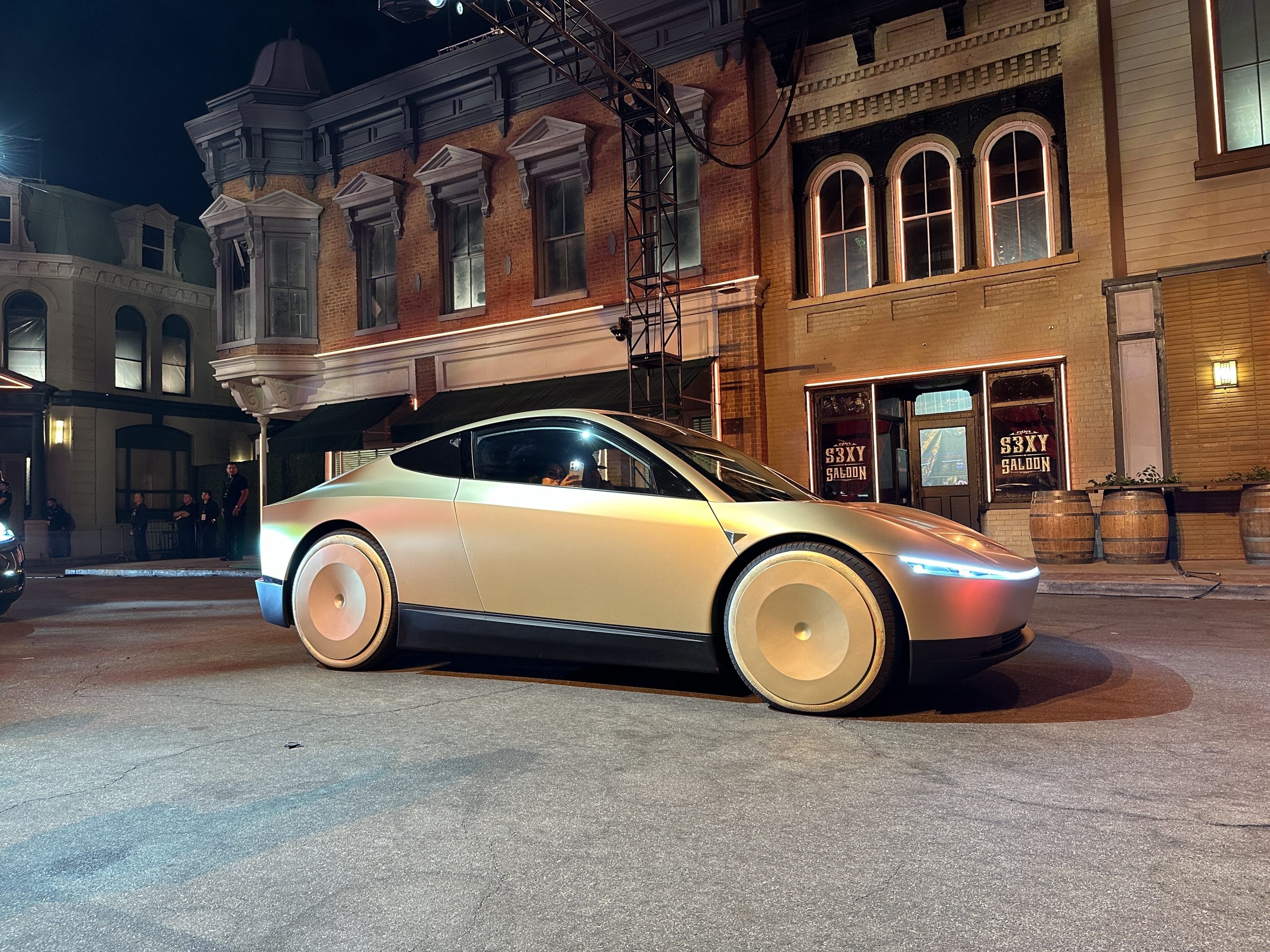
Tesla’s Gigafactory in Texas is building what appear to be castings for the upcoming Cybercab, ahead of the vehicle’s launch and the highly anticipated debut of Unsupervised Full Self-Driving (FSD).
On Monday, Tesla Giga Texas site observer Joe Tegtmeyer shared photos on X of some unique castings out beside the factory. Notably, Tegtmeyer points out that the castings are quite different from those of the Model Y and Cybertruck, which are currently the only two vehicles being produced at the Austin, Texas plant—at least publicly.
Some viewers noted that the castings appear to have a similar shape to the Cybercab, along with being one single casting, compared to the two-piece Giga casts the factory produces for the Model Y and Cybertruck. The shape appears to be consistent with Tesla’s unboxed production process, which is expected to build single-piece castings and will be used for the upcoming Cybercab.
You can see Tegtmeyer’s photos of the castings below, in comparison with the Cybercab body and castings for the Model Y and Cybertruck.
Giga Texas castings April 21, 2025, compared to Cybercab
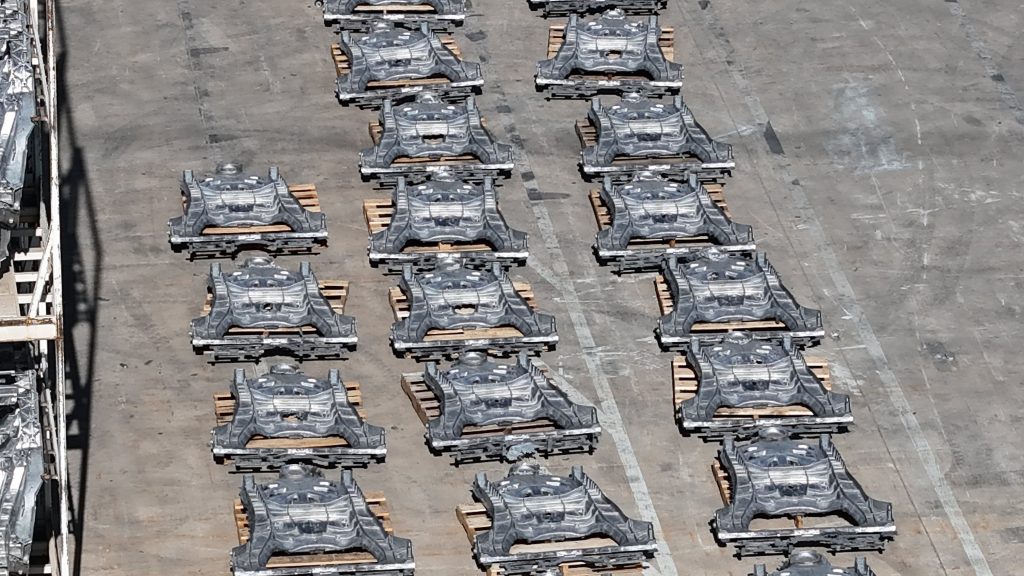
Credit: Joe Tegtmeyer | X
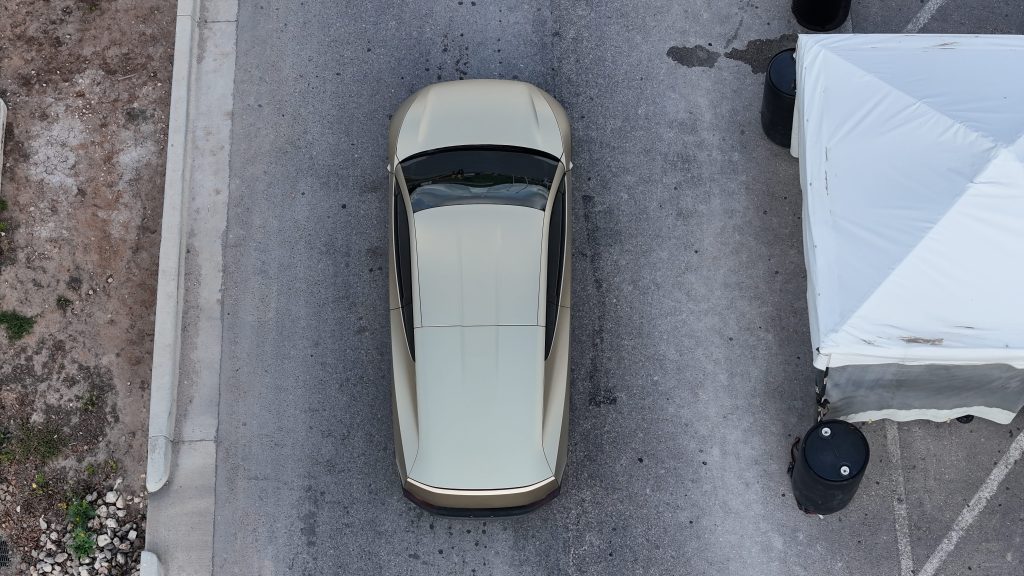
Credit: Joe Tegtmeyer | X
Giga Texas Model Y rear casting
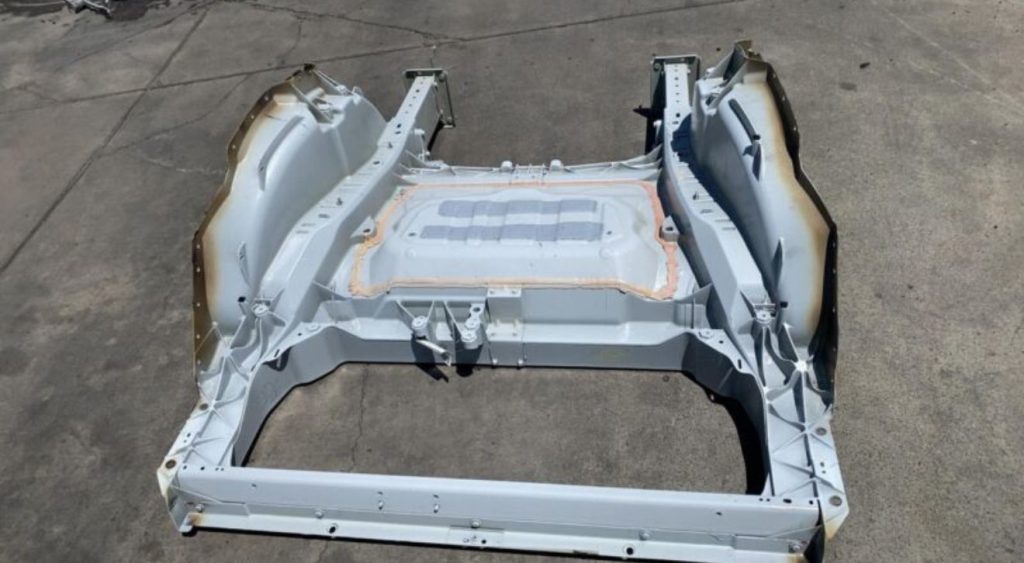
Credit: Joe Tegtmeyer | X
Giga Texas Cybertruck castings
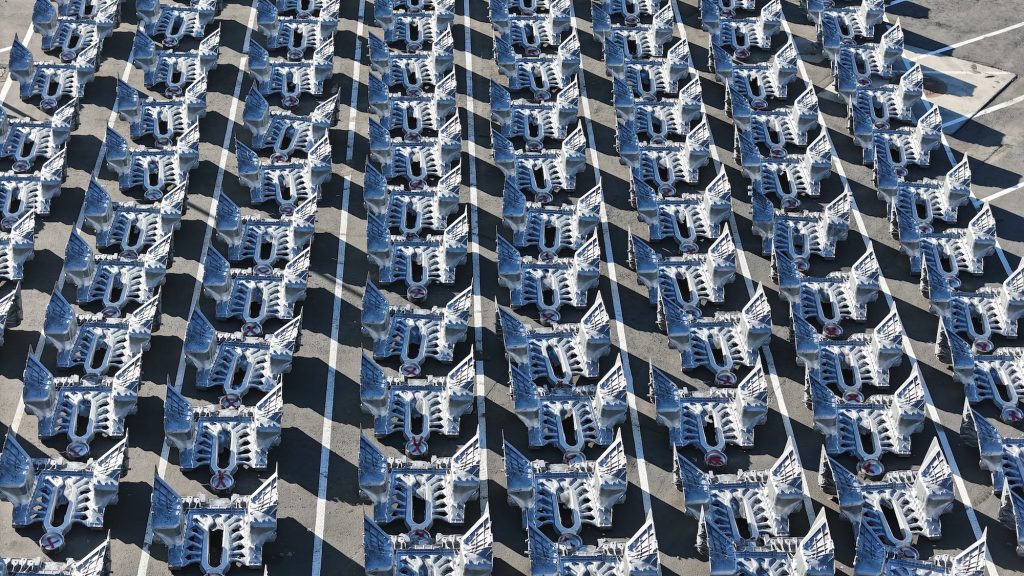
Credit: Joe Tegtmeyer | X
🎥: Our FULL first ride in the @Tesla Cybercab pic.twitter.com/6gR7OgKRCz
— TESLARATI (@Teslarati) October 11, 2024
READ MORE ON TESLA’S GIGA TEXAS: Tesla Cybercab no longer using chase vehicles in Giga Texas
In March, Tesla Vice President of Vehicle Engineering Lars Moravy confirmed in an interview with manufacturing expert Sandy Munro that Cybercab production would be starting prototype builds this summer, while the automaker is aiming to ramp for volume production in 2026.
While it isn’t summer yet, executives also confirmed in January that Cybercab production lines were already being prepared at Giga Texas, so it’s not unlikely that these castings are some of the upcoming vehicle’s first prototype builds.
The unboxed production process is also expected to revolutionize the automotive manufacturing industry, with CEO Elon Musk emphasizing how different the production line looks compared to its past vehicles during the Q1 2025 All-Hands meeting. Instead, Musk says the production line appears more like a high-speed consumer electronics line, and it’s expected to push Cybercab builds out in less than five seconds.
In a post on X earlier this month, Musk also reiterated that the Cybercab production line and the factory in general are essentially the products on their own, rather than just the cars themselves.
“The Tesla factory, especially our next gen Cybercab line, is the product,” Musk said. “That, autonomy and Optimus, are what matter.”
Tesla is also aiming to launch its first commercial robotaxi services around Austin, Texas this summer, along with launching its first iterations of Full Self-Driving (FSD) Unsupervised. The company is also holding its Q1 earnings call on Tuesday, during which executives are expected to address questions about the Cybercab and the upcoming commercial robotaxi service.
Tesla’s Giga Texas vehicles now drive themselves to outbound lot
Elon Musk
Tesla sits at a ‘crossroads,’ Wedbush says by listing six negatives
Wedbush is still bullish on Tesla, but says Elon Musk needs to make a choice between DOGE and the car company.
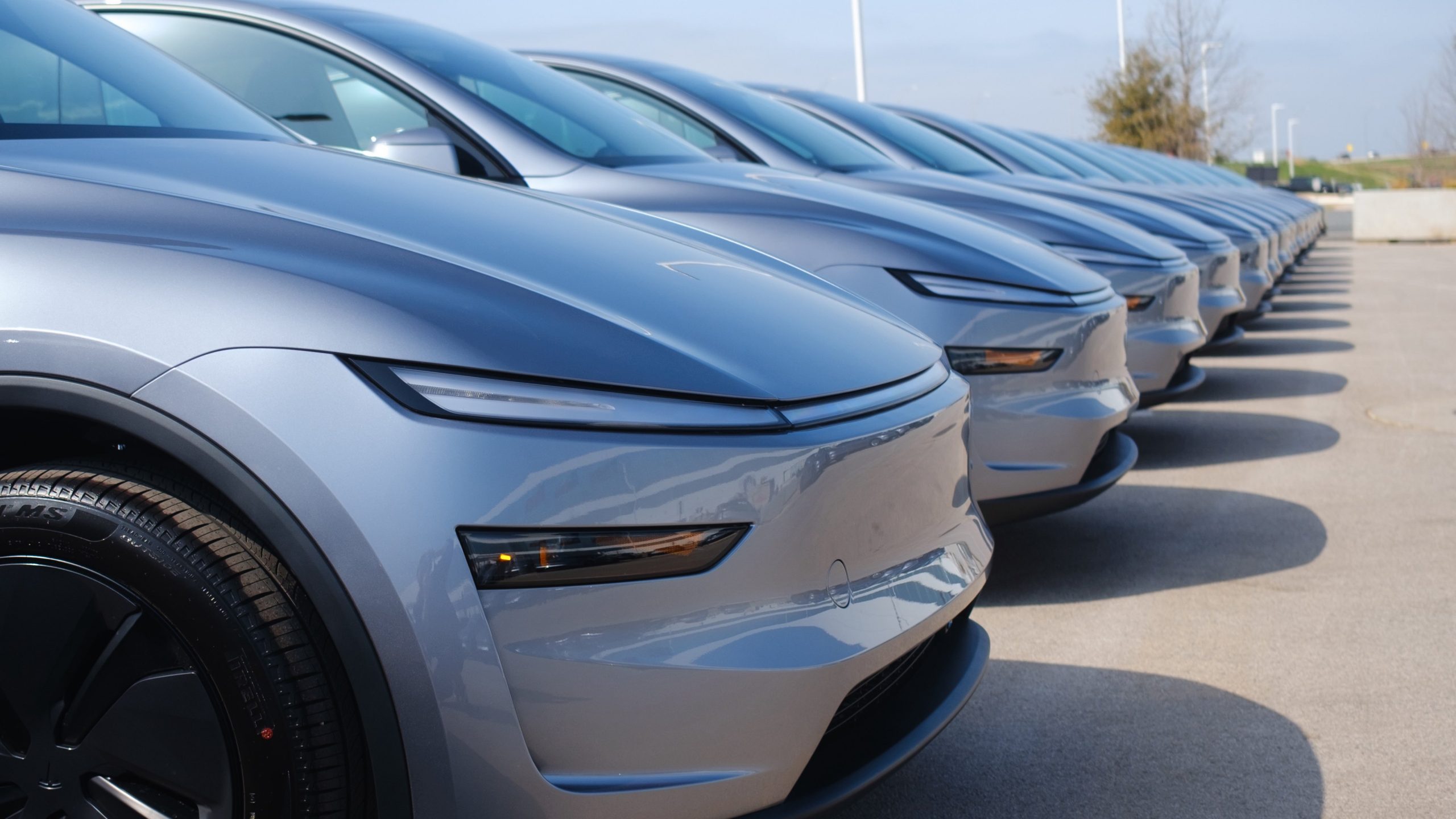
According to Wedbush, Tesla is sitting at a “crossroads” as it nears its Q1 2025 Earnings Call on Tuesday.
Although the company’s Earnings Calls have been primarily focused on the financials and accomplishments of the past quarter, Tesla is approaching this one differently.
Tesla has even said that this Earnings Call will feature a “company update,” and as most believe it will detail plans for future models and production timelines, others have different expectations and beliefs over what could be said.
Tesla still on track to release more affordable models in 1H25
Wedbush’s Dan Ives believes Tesla is at a crossroads and outlined his six biggest concerns for the company since CEO Elon Musk took on a role within the White House at the Department of Government Efficiency (DOGE):
- Tesla has now unfortunately become a political symbol globally of the Trump Administration/DOGE
- Tesla’s stock has been crushed since Trump stepped back into the White House
- Brand damage to Musk/Tesla resulted in a terrible 1Q delivery number, with much lower 2025 deliveries on the horizon
- Protests and violence against Tesla dealerships/owners have erupted around the globe
- 25% auto tariffs have been enacted, delaying future lower-cost models for Tesla, even though Musk is vocally against the tariffs for obvious reasons
- Potentially 15%-20% permanent demand destruction for future Tesla buyers due to the brand damage Musk has created with DOGE
Ives has held onto the idea that Musk’s involvement has made Tesla synonymous with the Trump administration, but that only seems to be true for those who share ideologies that oppose what the White House is doing.
Others are able to differentiate between the two, noting that Tesla is not a Trump organization, and vice versa.
Of course, there are negative sides to Musk splitting his time between the two and having ties to the President. Politically, it is hard to appease everyone.
Despite this, Wedbush’s Ives said the firm still remains bullish on Tesla:
“So why stay bullish? It’s a great question. We believe Tesla along with Nvidia are two of the most disruptive technology companies on the globe over the coming years. The unparalleled innovation, engineering scale, autonomous roadmap, and robotics future will unleash massive valuation upside over the coming years in our view. BUT….Musk needs to leave the government, take a major step back on DOGE, and get back to being CEO of Tesla full-time. Tesla is Musk and Musk is Tesla….and anyone that thinks the brand damage Musk has inflicted is not a real thing….spend some time speaking to car buyers in the US, Europe, and Asia…you will think differently after those discussions.”
Ives said that Musk needs to lay out the timing and rollout plans for the unsupervised Full Self-Driving and for the affordable vehicle platform, which was set for release in the first half of the year.
News
Trump’s auto tariffs spark concerns in Japan

Japan expressed concern over President Trump’s auto tariffs, citing inconsistencies with a 2019 bilateral trade deal signed with the U.S.
Prime Minister Shigeru Ishiba said Japan is committed to the 2019 agreement despite current concerns over President Trump’s new tariffs.
Trump’s tariffs impose a 25% duty on imported vehicles, effective April 3, 2025, and auto parts duties will be imposed in May. The 2019 U.S.-Japan trade deal, signed during Trump’s first term, reduced tariffs on U.S. farm goods and Japanese machine tools.
Then-Prime Minister Shinzo Abe secured assurances from Trump, stating, “Between President Trump and I, this has been firmly confirmed that no further, additional tariffs will imposed.”
The 2019 bilateral trade deal did not cover auto trade between the United States and Japan. However, at the time, Prime Minister Abe had received assurances from President Trump that the U.S. would not impose national security tariffs on Japanese car imports. As such, the deal avoided higher U.S. car duties.
According to Reuters, Japan faces Trump’s 24% tariff on its exports to the United States, which were paused until July. Trump’s 25% auto tariff and a 10% universal rate remain intact, impacting Japan’s car-heavy economy.
Ishiba addressed the issue in parliament, noting, “Japan has grave concern over the consistency” between the tariffs and the 2019 bilateral deal. “We will continue to convey our stance (to the U.S.) from this standpoint,” he added, clarifying that Japan has no plans to terminate the agreement. The deal excluded automobile trade and remains a cornerstone of bilateral relations.
Japan’s trade negotiator, Ryosei Akazawa, visited Washington last week to discuss trade issues, including non-tariff barriers and exchange rates. Finance Minister Katsunobu Kato is set to meet U.S. Treasury Secretary Scott Bessent this week to address currency concerns, signaling Japan’s proactive diplomacy.
Japan’s firm stance reflects its intent to protect its auto sector while navigating U.S. trade policies. As talks continue, the outcome could shape bilateral trade dynamics and influence Japan’s export strategy amid ongoing tariff uncertainties.
-

 News2 weeks ago
News2 weeks agoI took a Tesla new Model Y Demo Drive – Here’s what I learned
-
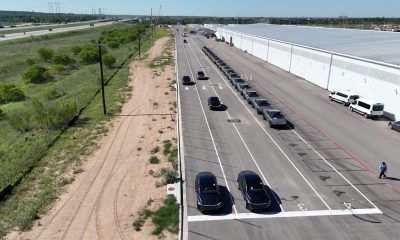
 News2 weeks ago
News2 weeks agoTesla’s Giga Texas vehicles now drive themselves to outbound lot
-
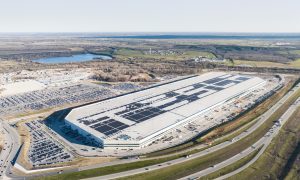
 News2 weeks ago
News2 weeks agoTesla’s ecological paradise near Giga Texas takes shape
-
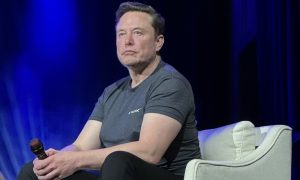
 News2 weeks ago
News2 weeks agoElon Musk and top Trump trade advisor Peter Navarro lock horns over tariffs
-
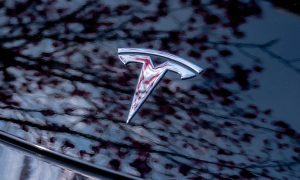
 News2 weeks ago
News2 weeks agoTesla bull lowers price target citing ‘brand crisis’
-
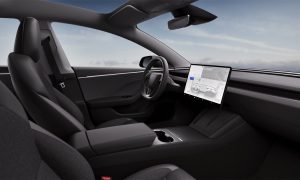
 News2 weeks ago
News2 weeks agoTesla adding new safety features for improved emergency detection
-
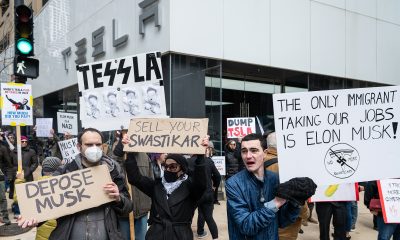
 News2 weeks ago
News2 weeks agoAnti-Musk protester temporarily arrested in Berlin for poster with Nazi salute
-
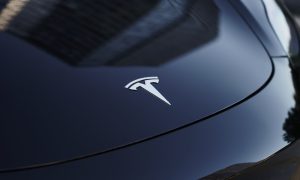
 News2 weeks ago
News2 weeks agoFormer Tesla executive aims to raise $50 million for energy startup

